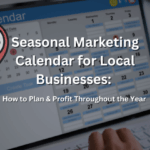In our last article, we looked at the concept of down-selling and saw how it applied to online and brick & mortar businesses alike.
Now let’s look at the other two sales techniques you can use to get more profit out of your customers.
Upselling
You’ve already spent the money acquiring… they have bought the core offer, they are now a fully paid customer, don’t let them get cold. Take advantage with the fact that they are a HOT customer (just paid, and interested) and make them another offer!
And don’t just make them any offer, make them a high-ticket offer; even though a large percentage of your customers probably won’t buy the high-ticket offer, that’s fine, they don’t have to! As long as SOME of them buy it is well worth asking; as you have already made the sale so anything after this point is gravy and you have nothing to risk by asking; you aren’t going to upset anyone. In fact you stand to lose profit by NOT asking.
The difference between upselling and downselling:
- You upsell is usually AFTER a purchase, and is a higher ticket offer
- You downsell is usually when the customer is refusing to purchasing anything, and is a lower ticket offer
This has to be implemented into your shopping cart if you are selling things online. Otherwise it is something that your sales people can implement into the sales process when talking with customers in person or on the phone.
The upsell should be EXPENSIVE. It should be several times the price of your core offer. Think in terms of several hundred to several thousand dollars. Or it can just be a longer commitment. An upsell like this could be a ’12-month subscription’ as opposed to a ‘one month only’.
Cross Sell
The two best examples of cross selling are with Amazon and McDonalds.
Amazon will show you what ‘other customers who viewed this product also bought’. And McDonalds will offer you French fries and a drink if your order did not already include that.
The cross sell simply attempts to sell someone something which is in a different category than the thing the customer is buying. It may be related and similar or it may be quite different.
When it is backed up with statistics and research, it can be quite effective. For instance, if there is a high percentage of customers who buy X and Z, it could be assumed that other customers might also want to do this. Some may even have intended to buy both but forgot, and the simple act of showing them reminds them to buy.
Again, as in the case with the other techniques, this needs to be implemented in your shopping cart or with your salespeople.
Why are we doing all of this?
One word: Lifetime Value.
The point of cross-selling, up-selling and down-selling is to create a higher customer lifetime value.
If you only sell your customer one thing at one time, and never again, his lifetime value is very low. Your offer would have to have a very high price in order to make this viable for you. Or, your cost of acquiring the customer would have to be very low; like using volunteers or very cheap labor for instance.
So, when a customer buys, make sure you offer a down sell, up sell or cross sell, in order to maximize profits.






